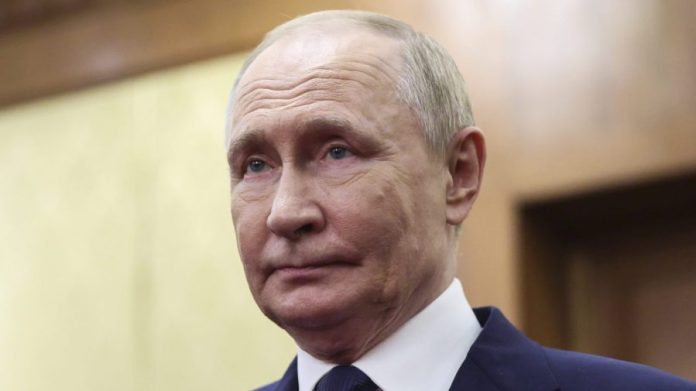
Tuesday evening’s invasion of Polish airspace by 19 Russian drones — some by way of Belarus — was a repeat performance. It was different this time only because NATO aircraft responded, shooting them out of the sky.
The fact that the U.S. has 10,000 soldiers stationed in Poland apparently had no effect on Russian President Vladimir Putin’s decision. One can only conclude that U.S. boots on the ground in Poland have seemingly lost their deterrent value.
As Polish Foreign Minister Radek Sikorski said during a press conference, “Putin laughs at President Trump’s peace efforts.”
What is becoming evident is the message Russia is sending to NATO: Stop your support for Ukraine. Specifically, he wants to end the use of Poland’s Rzeszów-Jasionka airport to stage and fly NATO weapons and ammunition into Ukraine.
Shortly after the invasion, the U.S. built-up the small regional airport in southeastern Poland. According to the Financial Times, it soon became “the biggest hub for the transport of military equipment to Ukraine, as well as for the evacuation of wounded Ukrainian soldiers to hospitals across Europe.” It was defended by Patriot air defense systems.
But in April 2025, the Pentagon announced its decision to vacate the airfield, citing “cost-cutting” as the reason — temporarily halting shipments to Ukraine until Trump reversed the decision. This, coupled with the Trump administration’s decision last week to halt security assistance funds under Section 333 and the Baltic Security Initiative — which helps finance the purchase of U.S. weapons, as well as ammunition, special forces training and intelligence support — may have helped green-light Putin’s decision.
Another element of the incursion was Russia’s probing the eastern flank of NATO to gather intelligence on their air defense networks, determine the composition and disposition of their launch sites and associated radars, and to measure response times for future operations.
It could also serve as a Russian tool to create a division between Old NATO (Western Europe) and New NATO (Eastern Europe) — to fragment the NATO alliance by undermining its confidence in U.S. support.
Russian drones entered Polish airspace again Tuesday evening, only this time NATO aircraft responded and shot them down. Shortly afterwards, NATO Secretary General, Mark Rutte sent a message to Putin: “Stop the war in Ukraine. Stop the escalating war, which he is now basically mounting on innocent civilians and civilian infrastructure. Stop violating Allied airspace. And know that we stand ready, that we are vigilant, and that we will defend every inch of NATO territory.”
On the plus side, the NATO response was immediate, measured, and effective. Poland invoked Article 4 of the North Atlantic Treaty, and the incident will be brought before the North Atlantic Council for discussion; however, the bureaucratic speed of NATO will now be on full display. So will the reluctance of many NATO countries to confront directly an increasingly aggressive Russia.
Unlike Italian Prime Minister Giorgia Meloni’s postwar security concept for Ukraine, this discussion will not be completed in 24 hours, and the decision will not be unanimous.
It is unlikely that Hungary or Slovakia will support any action against Russia. NATO requires all members to agree on resolutions for them to pass. NATO decisions are made through a process of consensus, which means reaching an agreement supported by every member country.
That could leave Poland vulnerable. The Polish government has experienced this before. In September 1939, the United Kingdom and France, while declaring war on Nazi Germany, failed to come to Poland’s defense in what is now known as “The Phony War.”
Failure to gain consensus on Polish security could undermine confidence in the alliance — just as Putin may have envisioned. But it is not just Poland. It is all of NATO’s eastern flank.
On Tuesday, a Russian MI-8 helicopter entered Estonian airspace near the island of Vaindloo, in the Gulf of Finland — the third such incident this year.
In July, two Russian Gerbera drones — one carrying more than 4 pounds of explosives — crossed into Lithuania from Belarus. In May, Finland alleged that two Russian aircraft violated its airspace.
Russian drones have also “crashed” in Romania, Moldova, and Croatia.
NATO needs a resurgence of American leadership. The U.S. must herd the cats — so that the alliance acts as one instead of as 32 member-countries seeking best individual outcomes. United we stand, divided we fall.
Yes, NATO aircraft shot down Russian drones over NATO territory on Wednesday, but will they be permitted to shoot down Russian aircraft that violate NATO airspace? Will they shoot down Putin’s ballistic missiles?
Those decisions need to be made now, during the Article 4 proceedings — not when Russia inevitably escalates the situation even further. Pilots and operators of air defense systems need to know their rules of engagement now.
The Baltic States are prepared. Lithuanian Defense Minister Dovile Sakaliene confirms, “We are in a stance where we would be ready to shoot [them] down.” Estonian Defense Forces spokesperson Maj. Taavi Karotamm said that country’s armed forces are allowed to “to engage hostile targets that have entered the Estonian airspace,” both under Estonian law and under NATO’s Integrated Air and Missile Defense rules of engagement.
NATO Air Policing is essential for deterrence, security and confidence in member countries. Three efforts provide that assurance: the Baltic States, Enhanced Air Policing on NATO’s eastern flank, and the Eastern Adriatic and Western Balkans.
But repeated probes along NATO’s eastern flanks must be met with a robust early warning system and an integrated air defense system, backed by a deep strike capability that can hit Russian and Belarusian airfields and ballistic missile and drone launch sites.
Putin keeps showing his willingness to escalate. He is now willing to threaten NATO in order to get what he wants in Ukraine. History cannot be allowed to repeat itself. Ukrainian President Volodymyr Zelensky cannot be the only Western leader to stand up to Putin.
Col. (Ret.) Jonathan Sweet served 30 years as an Army intelligence officer. Mark Toth writes on national security and foreign policy.

